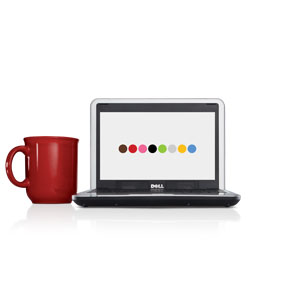The Linux laptops of 2009


(Shown is the Dell Inspiron Netbook with a coffee mug, actual size.)
The Chinese like cheap, and they understand the cellphone business model. When Westerners look at the product, however, we want usable keyboards, acceptable screens and compatibility with the files we used last year.
The first generation of Linux laptops ran an Intel Atom chip set. They were underpowered, but Microsoft found a way to get Windows XP on them, at $3 per copy, then Windows 7, at an unknown price, so they are less of an adjustment.
The next generation of Linux laptops will run the same ARM system used in phones, which is why Chinese makers are looking to Android, a phone operating system, as their guide.
The total hardware cost is about $20. Everything else is the case and the bling. With a 1 GHz ARM chip and $200 price point Microsoft may be unable to compete. At least for now.
Ubuntu is able to go there, and announced an alliance with ARM last year. Its kit will sport a version of the Ubuntu Netbook Remix system first shown last year. A beta release of a new version shipped April 2.
Another route to a Linux laptop may be the Qualcomm Snapdragon system, shown running phones during CES. As I noted, at this point the only physical difference between a netbook and a phone is the case.
But there is an enormous difference in the buyers and their expectations. The result could be an historic disconnect between manufacturers and consumers.
All of which makes June's CompuTex in Taiwan a very important show. It runs from June 2-6 and it's already being called the show of the "all in one" PC.
What's needed here are the views of Western users, not just manufacturers and OEMs. Last year's product failed because it ignored this viewpoint.
Computer users are different from phone users. We have laps, we use 10 fingers, shaped in a position like piano players, and we demand not just file compatibility but a very short learning curve from the old laptop.
Those views may be carried by OEMs like HP, Dell, and Freescale, but there is another problem. Current PC distribution channels can't handle a $200 PC. There is not enough margin there for even Fry's to push the thing.
Cellphone channels see this as an opportunity but can you imagine getting a PC at a cellphone store, or a carrier shop? Free with a two-year contract is no bargain if you can't get the thing to work and you can't get support. The 20-minute sales cycle typical in a phone transaction (it's cute, how does it work) won't work for a PC.
The Apple iPhone bridged these retail models. The Apple Stores were used for initial demand, at a PC-like $595 price, and the second edition went to the cellphone stores, with demand pre-installed by the stores and new users.
That's the kind of game Microsoft is looking to play with its Microsoft store, but it's nowhere near those price points and the company has scant history moving hardware. (Mice don't count.)
The result is that PCs are being designed and shipped, in million-unit lots, with almost no input from the consumers who will be expected to buy and use them, and with sales channels incompatible with the real market.
This could prove a disaster, one Linux may be unfairly blamed for. If Ubuntu and Android don't "sell through" in 2009, next year's more powerful chips could match up with a version of Windows 7, and a $400 price floor may then hold.
So time, for Linux, is of the essence. I'd love to go to CompuTex.